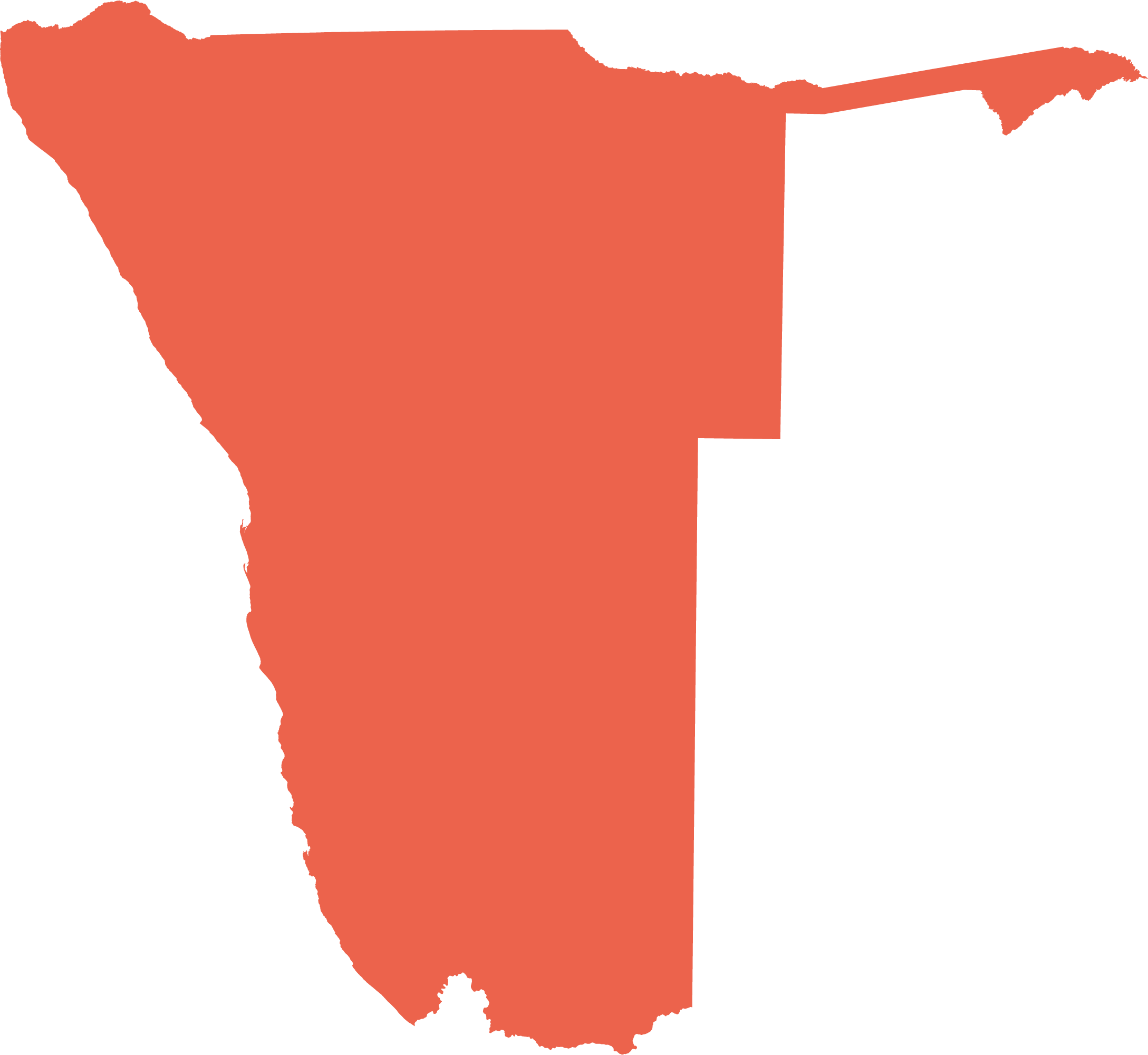Temperature
Namibia is generally considered to be a hot country. However, average temperatures are surprisingly moderate because hot weather is balanced by cold periods in winter, low night-time temperatures even in summer, and by fog and low cloud along the coastal belt. The diurnal and seasonal changes in temperature (considered first below) are the result of variations in sunshine and radiation, vegetation cover, altitude, cloud cover, fog and humidity.
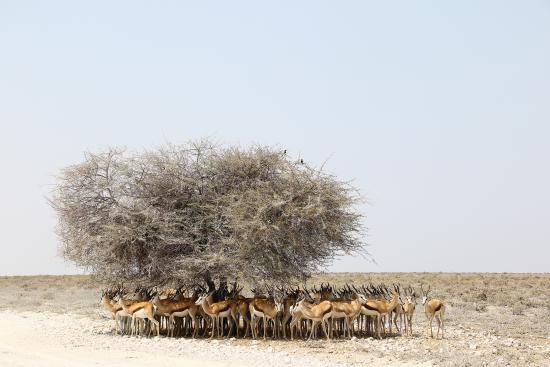
Photo: J Mendelsohn
Adapted to widely ranging diurnal temperatures, these springbok huddle under the shade of a lone tree in an attempt to find some relief from the midday heat. Temperatures can reach the midforties in some areas in summer; the heat is accentuated by sharp reflection off sparsely vegetated pale soils and dry, dusty air.
3.15 Maximum and minimum temperatures, and annual temperature range25

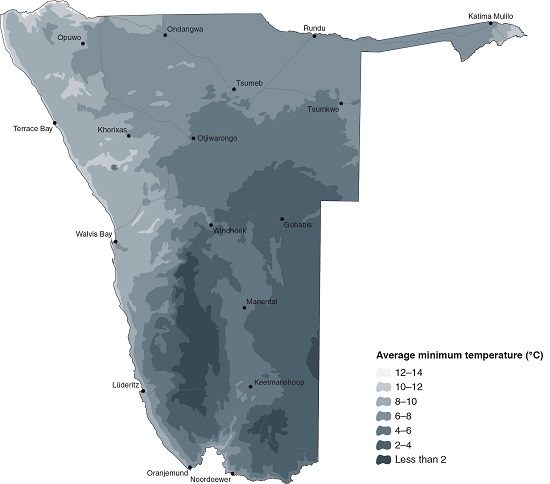
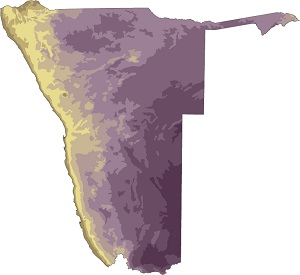

Average maximum temperatures (the average of all monthly maximum temperatures over a selected time period) during the hottest months are generally above 30 degrees Celsius everywhere east of the escarpment. The central highlands around Windhoek are slightly cooler while temperatures in the coastal belt are moderated by the presence of fog and low cloud. Some of the hottest parts of the country are in the far south and southeast where average maximum temperatures are in excess of 36 degrees Celsius. In the central and northern coastal areas, the highest average maximum temperatures are not experienced in summer, as might be expected, but during the winter months (see the monthly charts in figure 3.16). This is when warm East Winds sweep over the escarpment, becoming hotter as they drop down towards the coast (figure 3.04).
July is the coolest month over much of the country. Average minimum temperatures in the coldest months are less than 10 degrees Celsius in most areas (above). The coldest areas are along the southern escarpment, where average minimum temperatures are less than 2 degrees Celsius. Inland and over much of northern Namibia, the average minimum temperatures are generally above 6 degrees Celsius, whereas close to the coast, the moderating effects of onshore winds (and the warm East Winds) keep temperatures above 10 degrees Celsius.
The small map on the left shows the difference between the average maximum and average minimum temperature maps. The northern Namib and coastal strip of the southern Namib experience the smallest range in annual temperature of 22 degrees Celsius or less. The greatest range in temperature – above 32 degrees Celsius – occurs in the southeastern parts of the country around Karasburg and near the Botswana border.

Photo: A Jarvis

Photo: JB Dodane
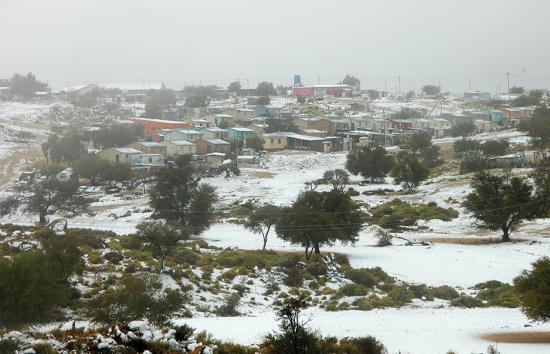
Photo: P Swieger
Some of the lowest monthly temperatures have been recorded in the south of the country (figure 3.16) which experiences the greatest range between maximum and minimum temperatures. When frontal systems, originating over the southern Atlantic Ocean in winter, move northwards across Namibia, extreme temperatures (below –10 degrees Celsius) can be experienced. Frost is then common (first two photos above), and snow occasionally falls in some areas, such as shown here in Aus (last photo above).
3.16 Temperatures at selected locations26
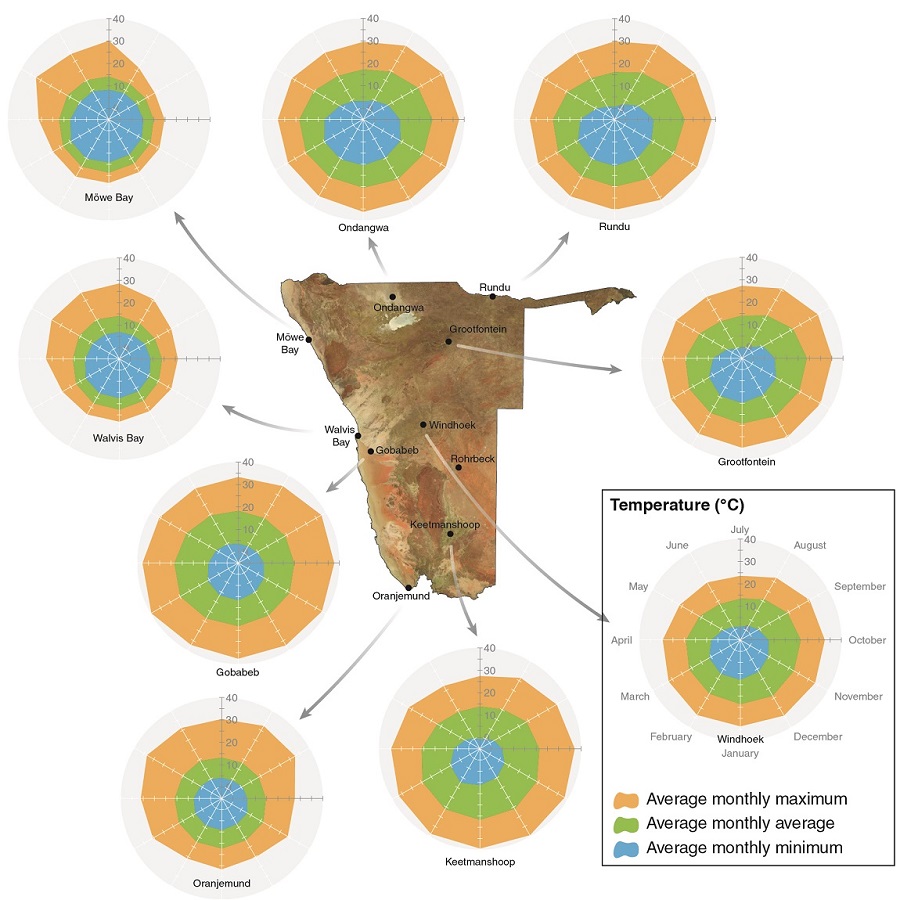
Inland temperatures vary most significantly in the minimums and ranges of temperatures recorded in the winter months. At the coast there is a much greater, yet opposite, seasonal shift in temperature from the cooler summer months to the highest average temperatures in April, May, June and July when hot East Winds are frequent.
Gobabeb in the Namib Desert experiences little seasonal variation in temperature. Although it is located at the eastern edge of the coastal fog belt (figure 3.06), Gobabeb lies in the sector of the country that receives some of the highest levels of solar radiation (figure 3.14). It experiences high temperatures all year round and holds claim to an official maximum record for Namibia of 45.5 degrees Celsius (in March 2013).27
3.17 Daily temperature range28



The average daily temperature range is calculated as the difference between mean maximum and minimum daily temperatures in each month. This differs from the annual temperature range map (figure 3.15) which is a measure of the difference between the maximums and minimums of the hottest and coldest months.
Average daily temperature ranges are lowest at the coast and highest in the northern escarpment area, the northeastern Namib Sand Sea and in southeastern Namibia. Towns at the coast experience an average daily range of less than 10 degrees Celsius. This is quite consistent throughout the year. Windhoek's temperature range of about 15 degrees Celsius also varies little during the year. Larger seasonal differences in daily temperature range are felt elsewhere. For example, Ondangwa and Rundu have a daily temperature range of 18–20 degrees Celsius in the dry, winter months, but the range drops to around 12 degrees Celsius when clouds moderate heat loss and gain during the peak rain months.
3.18 Average annual temperature29

The average annual temperature for each year is calculated from the average of each day's maximum and minimum temperatures. The central northern and northeastern areas along the northern escarpment of the country have the highest annual average temperatures. Moist, humid air absorbs and retains heat longer than dry air and so the greater levels of moisture during the rainy months, and the insulating effects of clouds, help maintain warmth day and night. In addition, the more vegetated Acacia and Broadleaved Tree-and-Shrub Savanna habitats (figure 6.02) insulate the land and help retain heat. Similarly, where humidity remains high along the coast, cool onshore winds and persistent fog or low cloud keep temperatures mild for most of the year, with averages below 20 degrees Celsius. The lowest average temperatures occur in the southern Namib and around the southern escarpment. Although the western desert belt receives high levels of solar radiation during the day (figure 3.14), the generally dry air (figure 3.19) over these bare surfaces loses heat rapidly at night.
